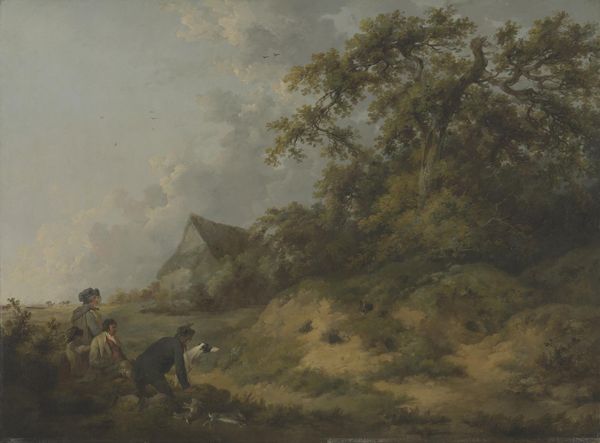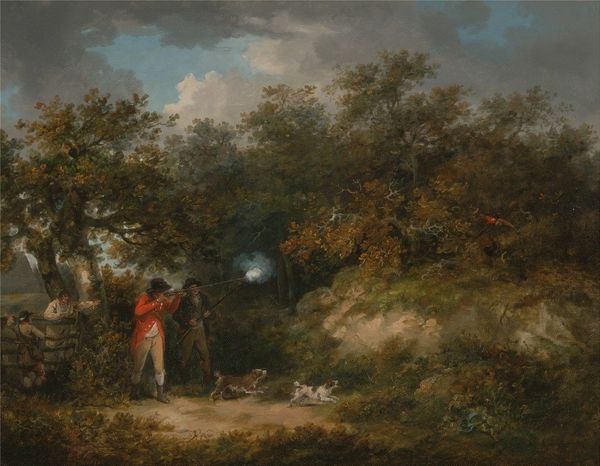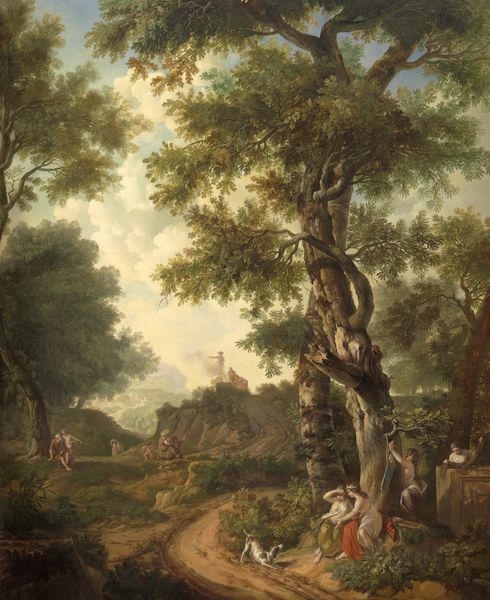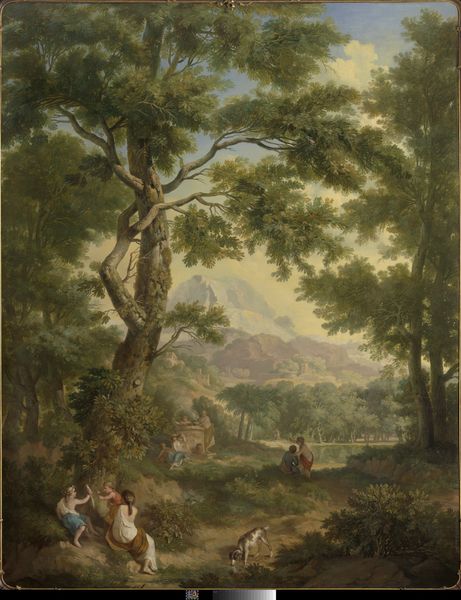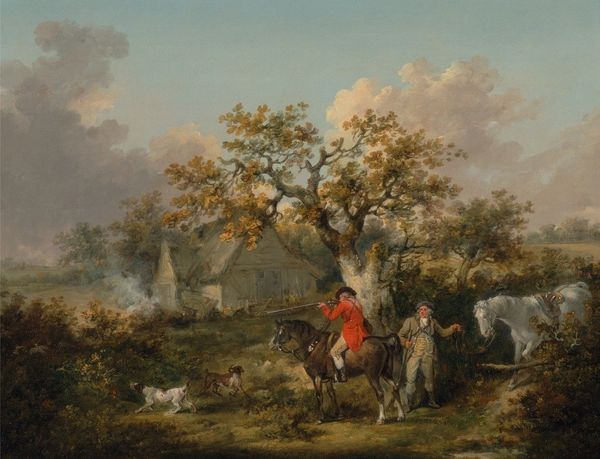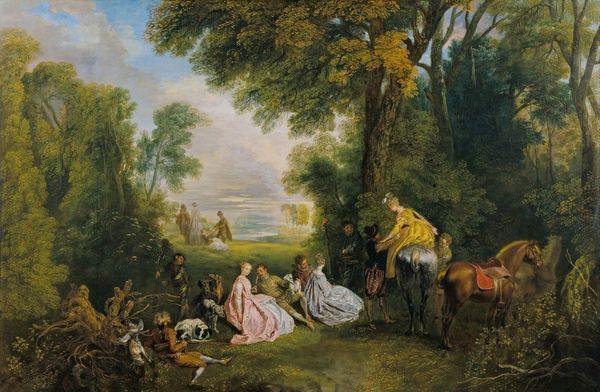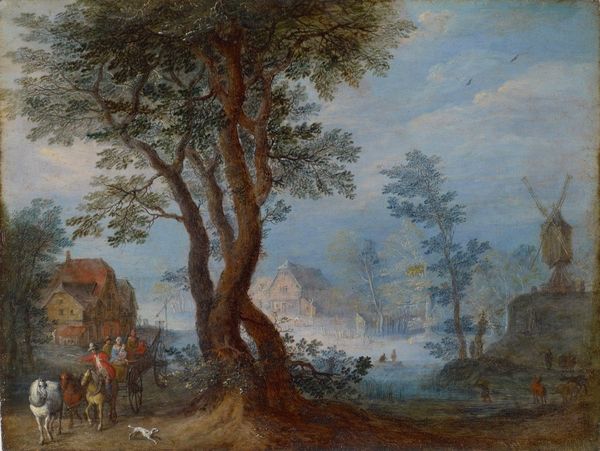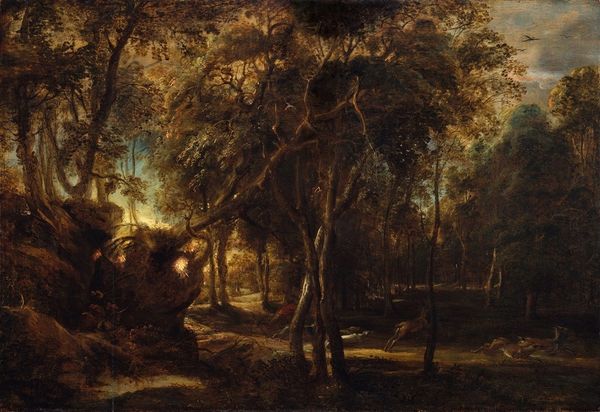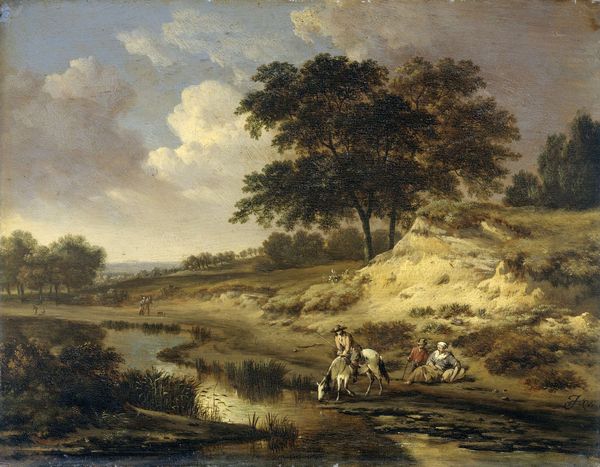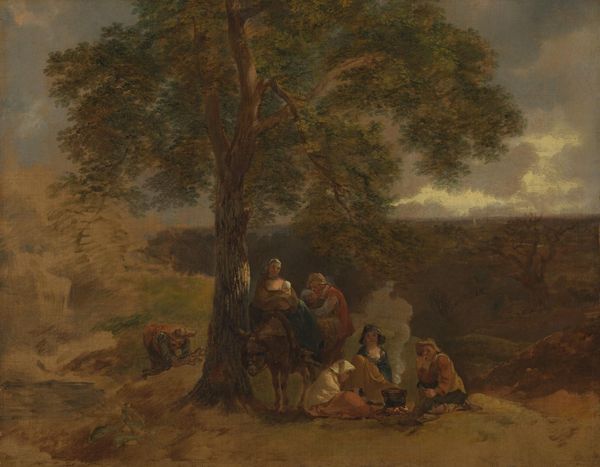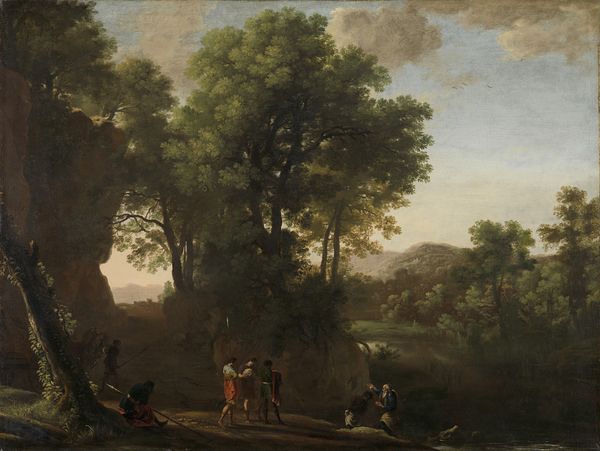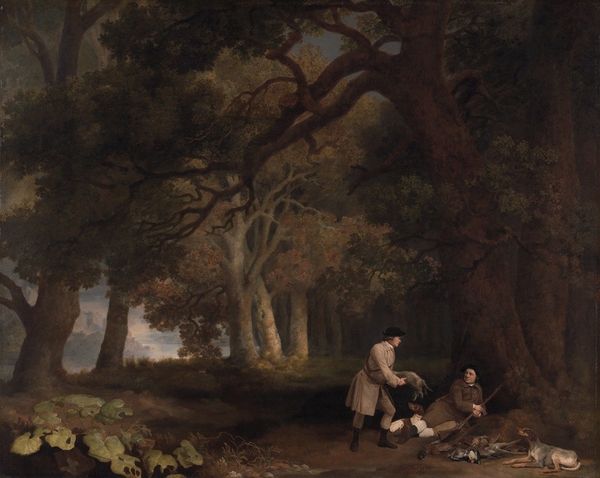
painting, plein-air, oil-paint
#
figurative
#
painting
#
plein-air
#
oil-paint
#
landscape
#
figuration
#
romanticism
#
genre-painting
Copyright: Public Domain: Artvee
Curator: Here we have George Morland's "Gypsy Encampment with Seated Man Breaking Firewood," painted in 1790. It’s an oil on canvas, depicting a family scene outdoors. Editor: Oh, look at the light filtering through those trees! It feels so...domestic, in a wild sort of way. The colours are lovely and muted. Almost smoky. Curator: Right, Morland's focus on the everyday life of transient communities challenges the idealized landscapes prevalent at the time. Think about the socio-economic conditions of the late 18th century. Enclosure movements were displacing many rural folk. Editor: True. But there's also a certain... charm, almost romanticising the simple life? I see the seated man chopping wood. It seems almost biblical, primal, maybe a little staged. It tugs at you to look beyond face value. Curator: Staged is an interesting word, isn't it? Morland's patron network consisted primarily of wealthy Londoners, hungry for glimpses into rural life from afar. His production had to cater to that demand. There's a whole system of labour and consumption reflected here. What might the figures gathered here make of that? Editor: The donkey, patiently waiting—that’s lovely, too. It has a certain silent quality, doesn’t it? Like it carries all the unvoiced stories of the group. Its own kind of making, or maybe survival. Curator: The depiction of labor is so integral. Wood gathering, fire maintenance, perhaps basket weaving – each activity connects them to tangible resources, offering an income and an identity shaped by these practices. Even the donkey becomes labor, essential to transit of materials, belongings, a shared itinerant space for making, carrying on with the work of day-to-day life. Editor: Absolutely. The painting becomes less a snapshot, and more an invitation to inhabit that liminal space between wild and settled, production and reflection. I never really looked closely at Morland, now I see more that it first revealed! Curator: And seeing is always the beginning of knowing, no? I will always think a bit harder about the making and consumption involved in what he depicted thanks to this image.
Comments
No comments
Be the first to comment and join the conversation on the ultimate creative platform.
